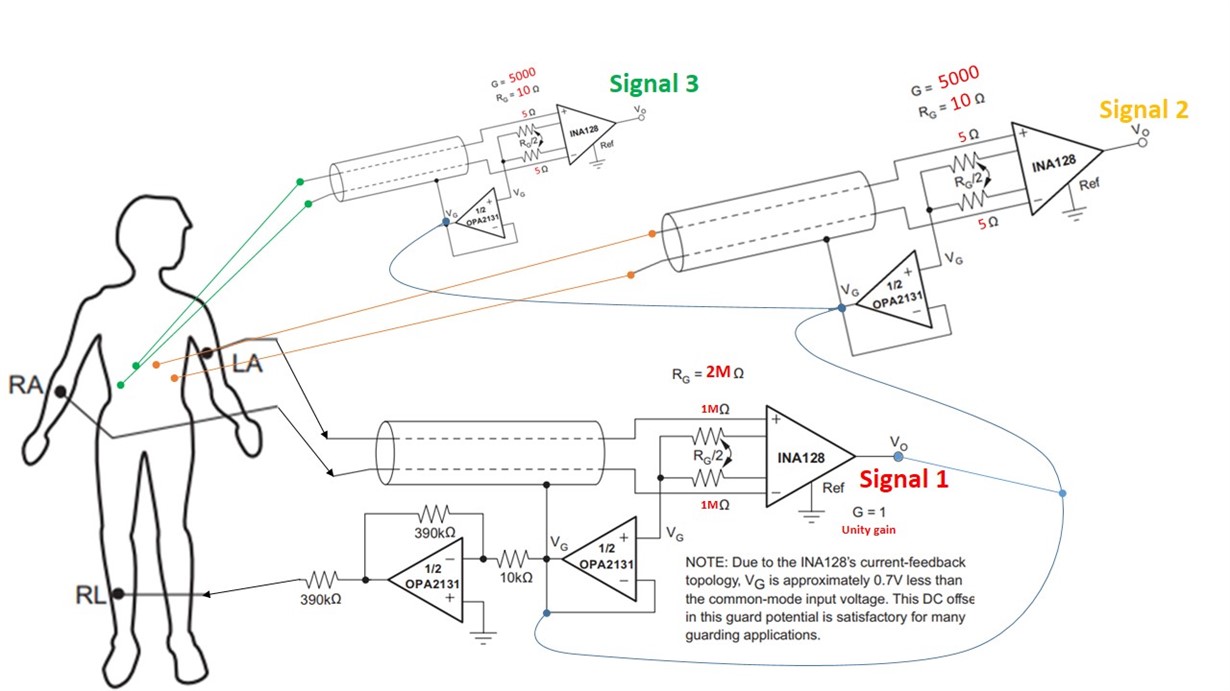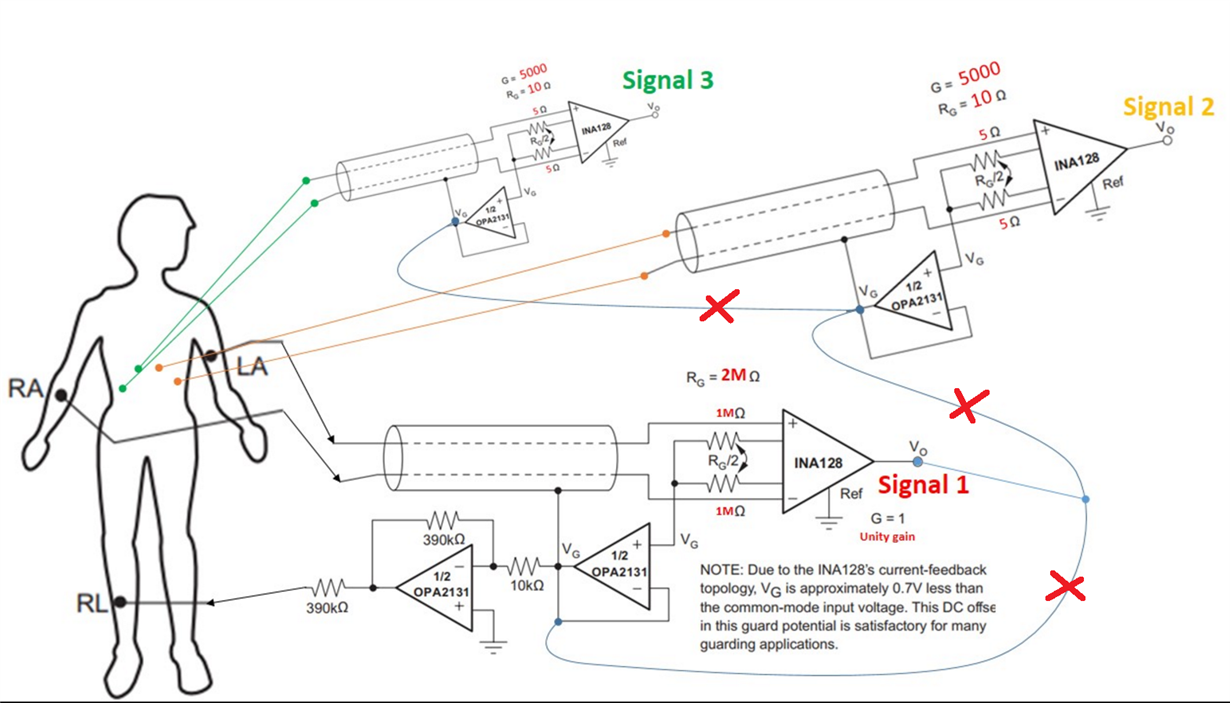Other Parts Discussed in Thread: INA128
Hi,
Referring to the attached schematic, I've slightly modified example application of INA129 and was wondering whether what I'm trying to achieve here makes sense, and if it is the best way to do this?
My main signal of interest is the diaphragm muscle which sits right underneath the heart, this muscle has a signal amplitude in micro Volts range, compared to the heart that is in mili Volts range. Signal 1, acquires the heart muscle signal as suggested in INA129 datasheet, except that I've set the gain high enough to achieve unity gain/not amplify it, then it is fed into the same right leg driver, hoping to remove this common 'noise' from signal 1 and signal 2? then signal 1 and 2 are amplified by x5K gain to increase the resolution before digitization. Am I on the right track?
Also what is the purpose of that 10k resister in right leg drive circuit before inversion? Thank youu in advanceee! 


